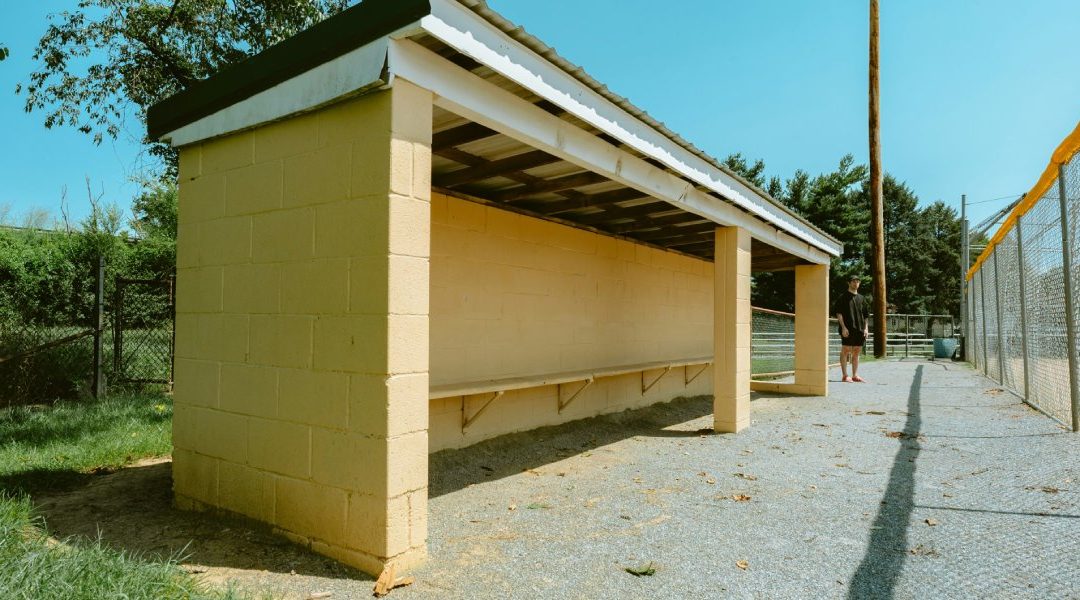A rundown of the important details on the proper insurance coverage for youth and amateur sports
Youth and Amateur Sports is a dynamic and thriving industry, yet it comes with inherent risks that can jeopardize the financial stability and operational success of all involved. Insurance is a critical component in safeguarding against these risks, providing financial security for club owners, event operators, venues, industry partners and the parents/players who participate in the space. This compendium of the youth insurance deep dive by the Sports Events and Tourism Association (Sports ETA) and U.S. Sports Club Insurance (USSCI) explores types of insurance essential for the industry, such as the specific needs of different stakeholders, the benefits of using an insurance broker and strategies to maximize coverage and save on premiums.
Stay Ahead in Sports Planning—Subscribe Today! and Read More Sports Info for FREE
Types of Insurance for Sports
From General Liability to Travel Insurance, there are 12 types of insurance coverage for youth and amateur sports that are important to understand. To read a complete rundown of each type, please visit Sports ETA.
- General Liability Insurance
- Directors and Officers (D&O) Liability
- Accident Medical Insurance
- Commercial Property & Equipment Insurance
- Equipment-Related Liability
- Workers’ Compensation
- Cyber Coverage
- Sexual Abuse and Molestation
- Umbrella Liability
- Sports Fee Insurance
- Event Cancellation Insurance
- Travel Insurance

The score on cost for youth and amateur sports insurance
There is no straightforward answer to questions of cost since “youth and amateur sports insurance” is a broad term for the various types of insurance used within the sports realm. It’s more important to understand that not securing the proper coverage can potentially be a far greater cost and risk to your organization. Ensuring there are no hidden exclusions in your policy is crucial.
Parents can protect their investments with individual sports fee insurance, which is tailored to protect the financial commitments that are made to play competitive sports. Becoming a standard offering, it’s designed to protect both clubs and families from financial losses when unexpected events sideline young athletes. This ensures that if an athlete can’t participate, it won’t lead to a significant financial hardship for families or clubs. Clubs can often acquire a group rate, while parents might opt in during registration, making this type of coverage versatile. It is crucial to review the covered perils and exclusions, and to inquire about the claims process to ensure comprehensive protection.
Level Up Your Event Planning Skills—Subscribe Now and Download the SPG Magazine for Expert Tips and News
Why you may need an insurance broker
An insurance broker acts as an intermediary between you and an insurer. Armed with both your background and their insurance know-how, they bring industry-specific expertise to help navigate complex insurance needs and find the best solutions for your operations and events. These specialty brokers understand the latest market trends and help to compare rates and policies from different carriers, ensuring the most competitive rates and the best coverage options to avoid unnecessary cost.
In the event of a claim, brokers offer support to streamline the process and achieve faster
resolution, minimizing disruption to your operations. By providing proactive risk assessment and mitigation strategies, this helps prevent incidents and reduces the likelihood of claims.

Navigating Insurance industry sectors
By understanding and addressing specific insurance needs, NGBs, event operators, sports clubs, venues and industry partners can better protect themselves against potential risks and ensure the smooth operation of their activities within the sports ecosystem.
National Governing Bodies (NGBs) play a crucial role in the sports ecosystem by overseeing and regulating their respective sports. They typically provide specialized insurance to their affiliated clubs and event organizers through the sanctioning of events. This often includes:
- Liability Insurance: Covers claims of bodily injury or property damage during sanctioned events.
- Excess Medical Insurance: Provides additional medical coverage for participants, ensuring that any injuries sustained during events are adequately covered.
- Event Operators face unique risks and require comprehensive insurance coverage to protect against financial losses. The primary insurance needs include:
- General Liability Insurance: Protects against claims of bodily injury or property damage during events.
- Event Cancellation Insurance: Covers financial losses due to unforeseen cancellations, such as severe weather or other emergencies.
- Participant Accident Insurance: Provides coverage for injuries sustained by participants, ensuring medical expenses are taken care of.
Sports Clubs play a vital role in the youth and amateur sports ecosystem. Their insurance needs vary based on if they own and operate their facilities or utilize rentals. Key insurance considerations include:
- General Liability Insurance: Essential for protecting the club against claims of injury or property damage.
- Property Insurance: Necessary for clubs that own their facilities to cover potential damage or loss of property.
- Directors and Officers (D&O) Insurance: Protects club officials from personal liability in case of legal actions taken against their decisions.
- Participant Accident Insurance: Ensures that injuries sustained by athletes during club activities are covered. This coverage can also be provided through player cards obtained through the NGB, usually purchased directly by the parents.
Keep Your Finger on the Pulse of Sports Planning—Subscribe and Never Miss an Update
Venues have specific insurance requirements to protect their physical assets and operations. Essential insurance types include:
- Property Insurance: Covers the venue’s buildings and contents.
- General Liability Insurance: Protects against third-party claims of bodily injury or property damage occurring on the premises.
- Workers’ Compensation Insurance: Provides coverage for employees in case of work-related injuries or illnesses.
- Business Interruption Insurance: Covers lost income and operating expenses if the venue is temporarily unusable due to a covered event. Event Cancelation insurance is especially helpful for outdoor venues.
Industry partners, such as registration and technology partners, require typical business insurance but especially benefit from cyber coverage. This is crucial given the sensitive data they handle and the increasing risk of cyber threats. Key insurance considerations include:
- General Liability Insurance: Protects against claims of bodily injury or property damage.
- Professional Liability Insurance: Covers claims related to errors or omissions in professional services provided.
- Cyber Liability Insurance: Provides protection against data breaches, cyber-attacks, and other cyber threats, covering costs associated with data recovery, legal fees and notification expenses.
- Business Interruption Insurance: Covers lost income and operating expenses if the partner’s operations are disrupted due to a covered event.

What the stats say on the need for Sports insurance
Utilizing 2023 weather-related data associated with air travel, out of the 606,218 scheduled domestic flights, 35,462 were either delayed or canceled due to weather conditions, according to the U.S. Department of Transportation and FlightAware. This highlights the significant impact that severe weather can have on air travel schedules, emphasizing the need for robust contingency planning and insurance solutions to mitigate financial and logistical challenges. This also illustrates the effect that weather can play on both outdoor and indoor sporting events, leading to potential cancellations and disruptions.
Event cancellation insurance is a critical component for event operators, venues and participants in the industry. This insurance mitigates financial risks associated with the unforeseen cancellation of events, such as severe weather, natural disasters, or other emergencies, ensuring that all stakeholders are protected from potential financial losses.
According to Stanford Medicine, youth sports injuries are a significant concern, with approximately 3.5-million children under 14 getting injured annually while playing sports or participating in recreational activities. These injuries represent about one-third of all childhood injuries.
The Hartford reported that 40% of small businesses will file a liability claim within the next ten years. This statistic highlights the importance of carrying adequate liability insurance to protect against potential risks and financial losses associated with claims.

What is hard-to-place coverage with Sports Insurance?
If you find yourself with hard-to-place coverage or rates that are skyrocketing then it may be time to explore alternatives to the traditional insurance market. As insurance premiums rise and some policies become unavailable, alternative solutions may exist within secondary markets or captive insurance programs. Controlling risk factors, and implementing risk reduction plans can help reduce costs as well.
With all of this in mind, what options are available for those who are turned down for traditional insurance? Secondary/surplus lines insurance markets specialize in taking on hard-to-place risk exposures that a business may have or if they simply have had issues with the severity or frequency of claims. An alternative option is captive insurance where a business creates its own insurance company to cover its risks. This option provides greater control over insurance costs and coverage terms, and can be particularly beneficial for businesses with unique or high-risk exposures that are difficult to insure through traditional means. However, setting up a captive insurance company requires significant initial investment and regulatory compliance.
How to save on premiums
Choosing policies with higher deductibles can also lower insurance costs. Ensure that you ask for different deductible options when reviewing the coverage being quoted. Although higher deductibles can increase your out-of-pocket expenses for claims, weighing your options is an important part of choosing the right coverage for you.
Some risks, such as the location and type of business facility, can be managed to influence
insurance costs. Risk factors like community crime rates, fire protection and building security can impact insurance rates. A well-maintained, secure building with good access to emergency services can lower premiums. Historical safety records and claim history also play a role in determining rates.
Implementing risk reduction plans can minimize the need for extensive insurance coverage. Examples include enhancing workplace security to reduce burglary and theft risks, and establishing safety programs to lower accident rates. By actively managing risks, businesses can potentially reduce insurance requirements and associated costs.
Closing comments for Sports Insurance
Insurance is designed to be a safety net for when you need it, we all want fair prices that are clearly associated with the level of risk. For more detailed analysis, insurance tips and tricks, a checklist for event operators and more, please be sure to check out the official youth insurance deep dive by Sports ETA and USSCI. The complete guide outlines strategies to mitigate risks, providing peace of mind for parents, clubs and event organizers.
Join the Community of Sports Planners! Get Your Free Subscription and Download the Sports Planning Guide Magazine for FREE





